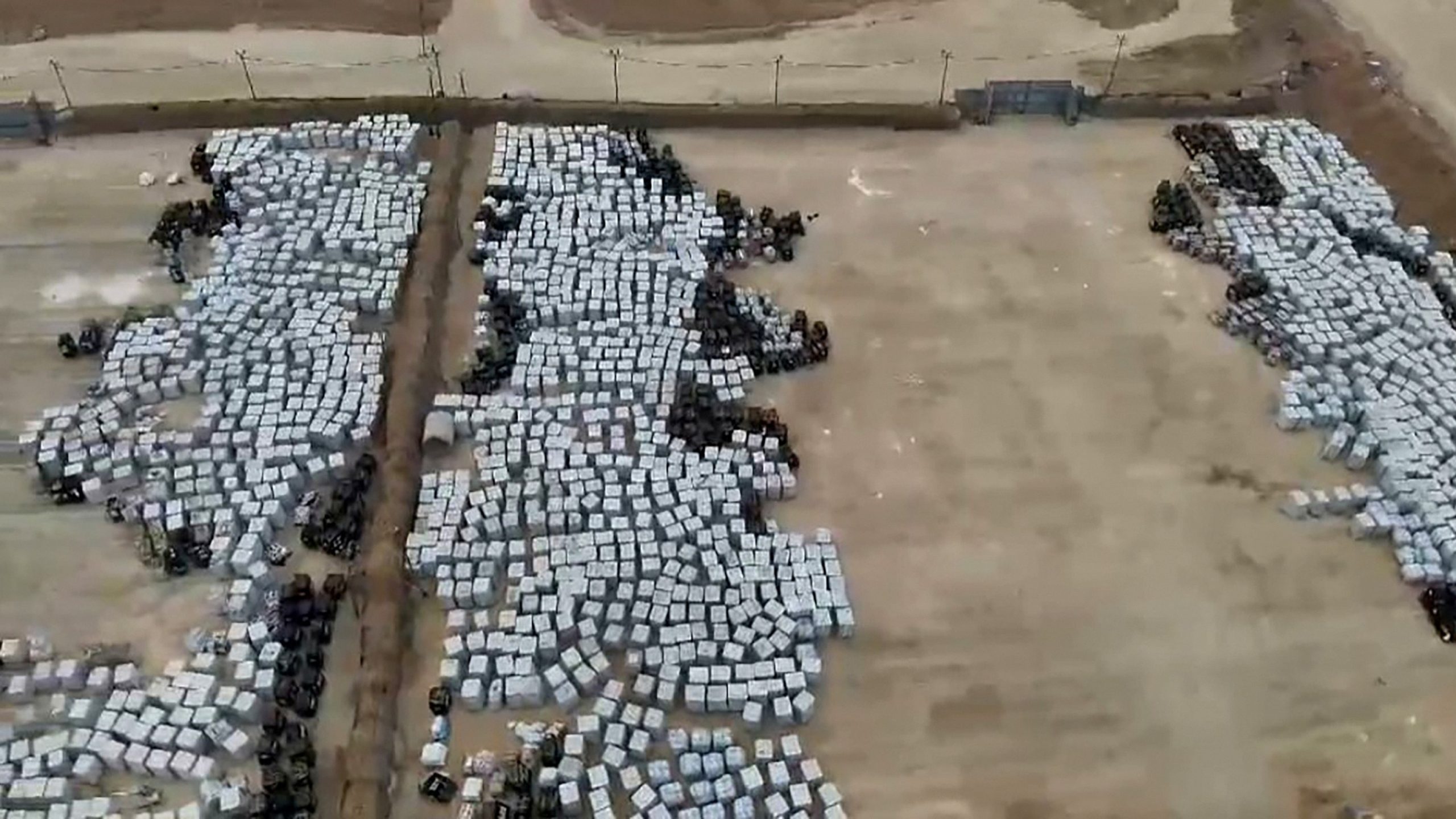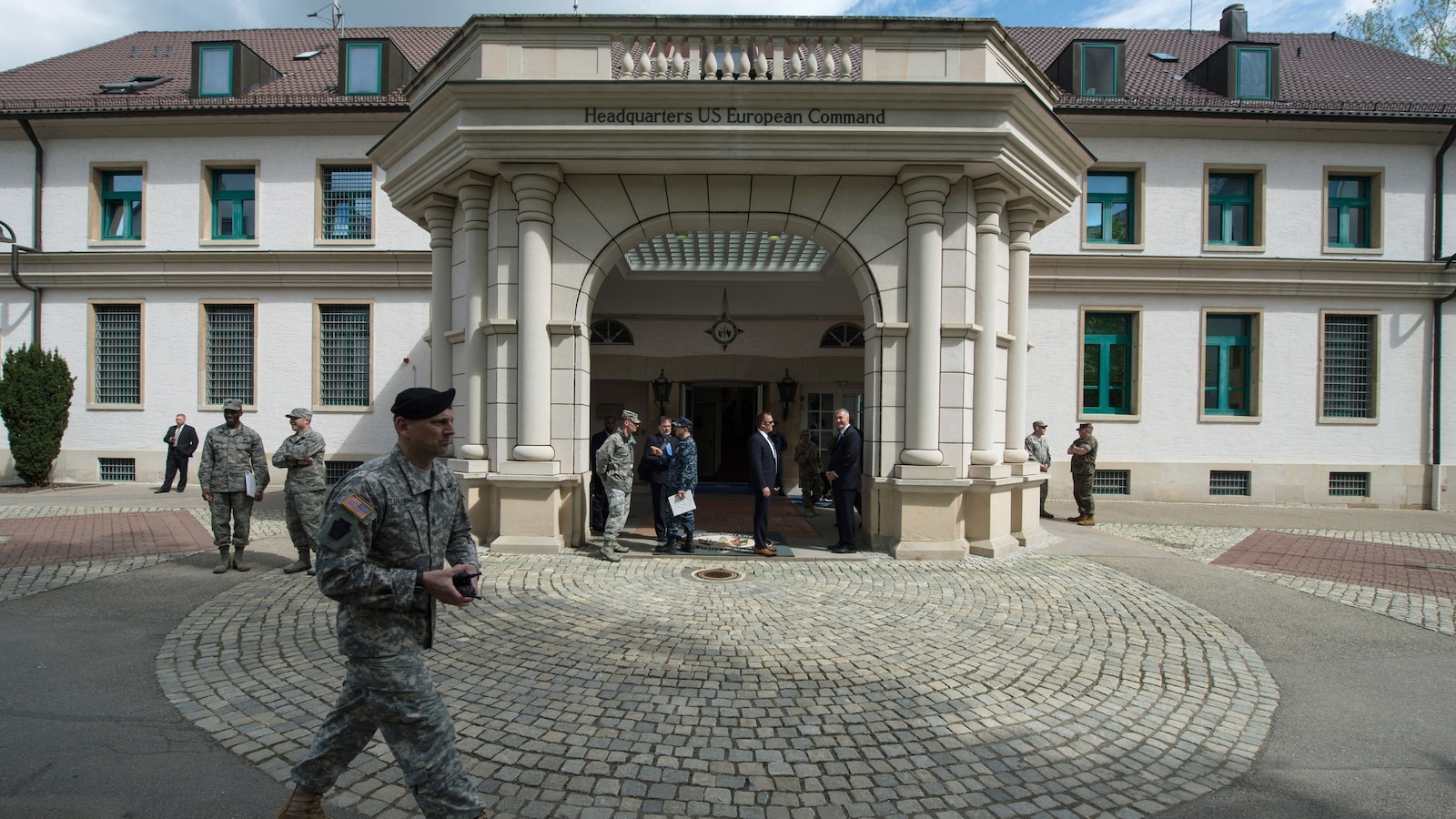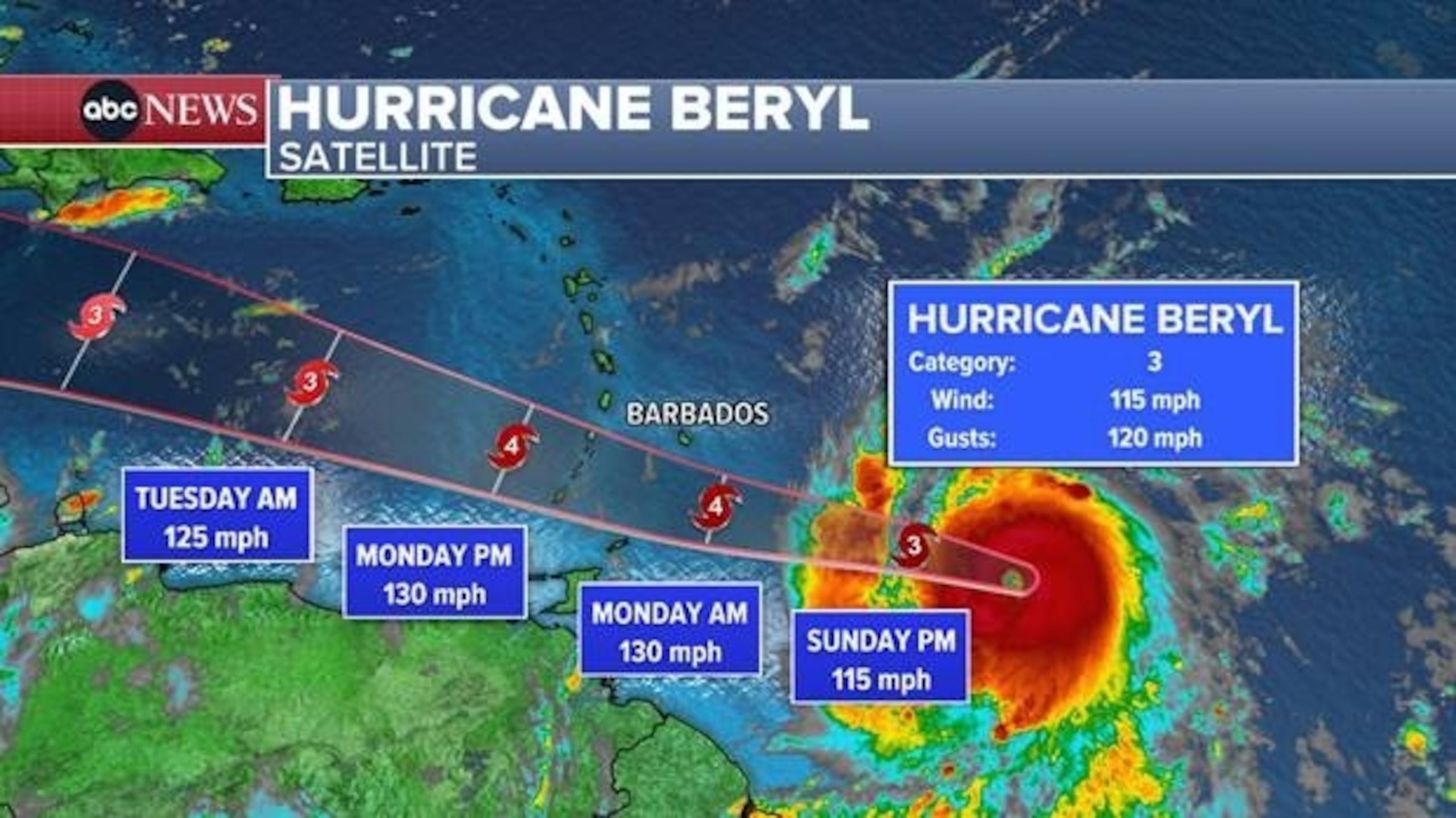U.S. aid intended to help desperate Gaza residents has been sitting untouched on a beach in the war-torn strip because of a long-running dispute between the U.N. and Israel over whether the aid workers in charge of distributing the supplies can carry protective gear, radios and other sensitive equipment, according to several officials familiar with the situation and documentation obtained by ABC News.
Israel, which closely screens any goods coming into Gaza, has blocked the aid workers from bringing in sophisticated protective equipment in large part because of concerns that the gear could wind up with Hamas.
The dispute reached a fever pitch this week after U.N. officials threatened to suspend humanitarian aid operations across Gaza unless their demands for security equipment was met, prompting high-level private meetings in Washington this week between the U.N. and Israeli Defense Minister Yoav Gallant, who had traveled to the U.S. for face-to-face meetings at the Pentagon and White House.
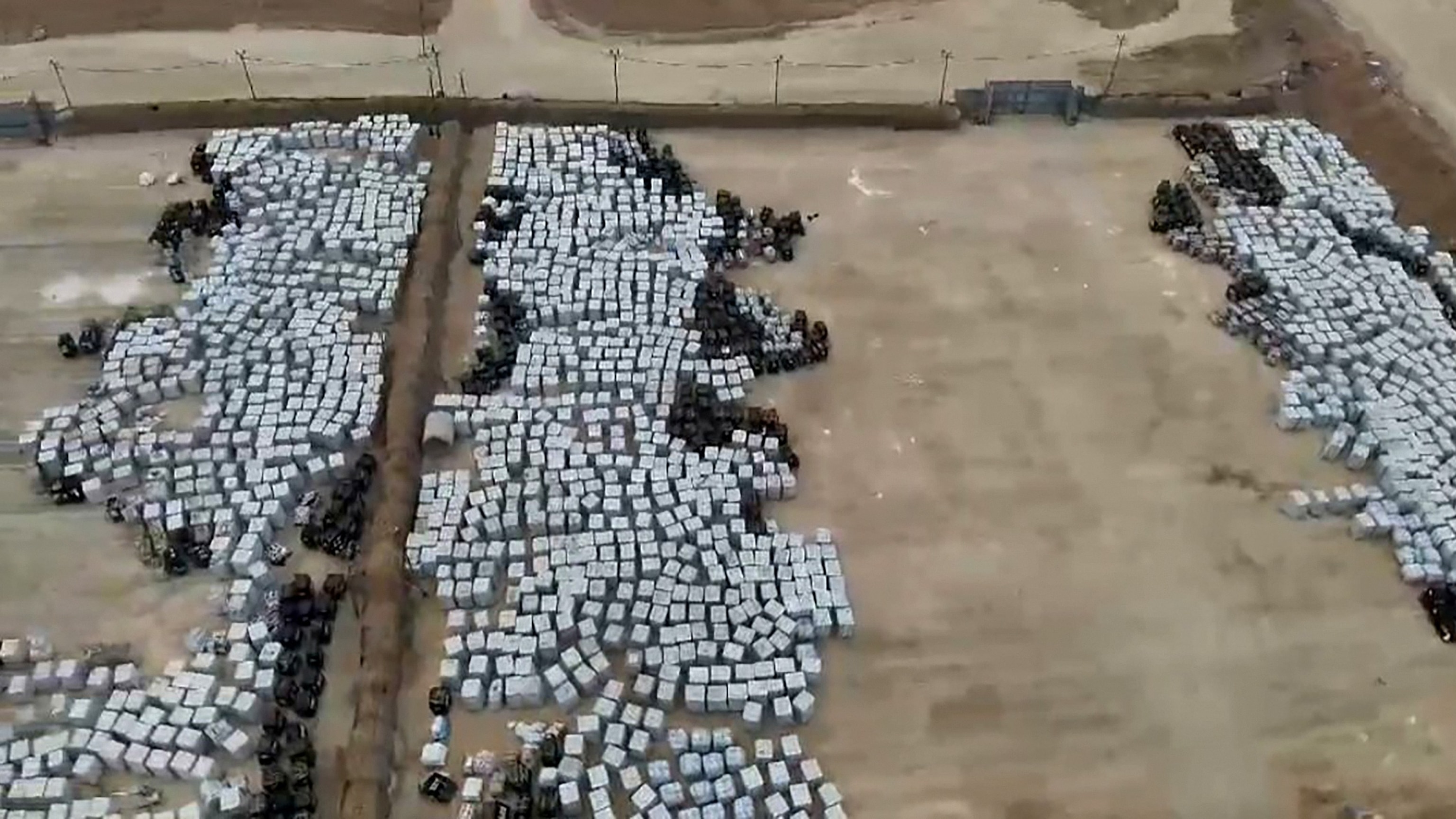
Humanitarian aid waits for distribution at the offloading area of the JLOTS pier in Gaza.
COGAT/X
The U.N. needs “an effective and reliable set up of security protocols and equipment, to help manage this risk across the [Gaza] Strip,” wrote Muhannad Hadi, a top official at the U.N., told the Israel Defense Forces in a June 17 letter.
An Israeli defense official said Gallant is personally pushing to resolve the issue and get humanitarian aid moving again. In a statement, Gallant said the dialogue is ongoing “to further address the needs on the ground, and see what can be improved.”
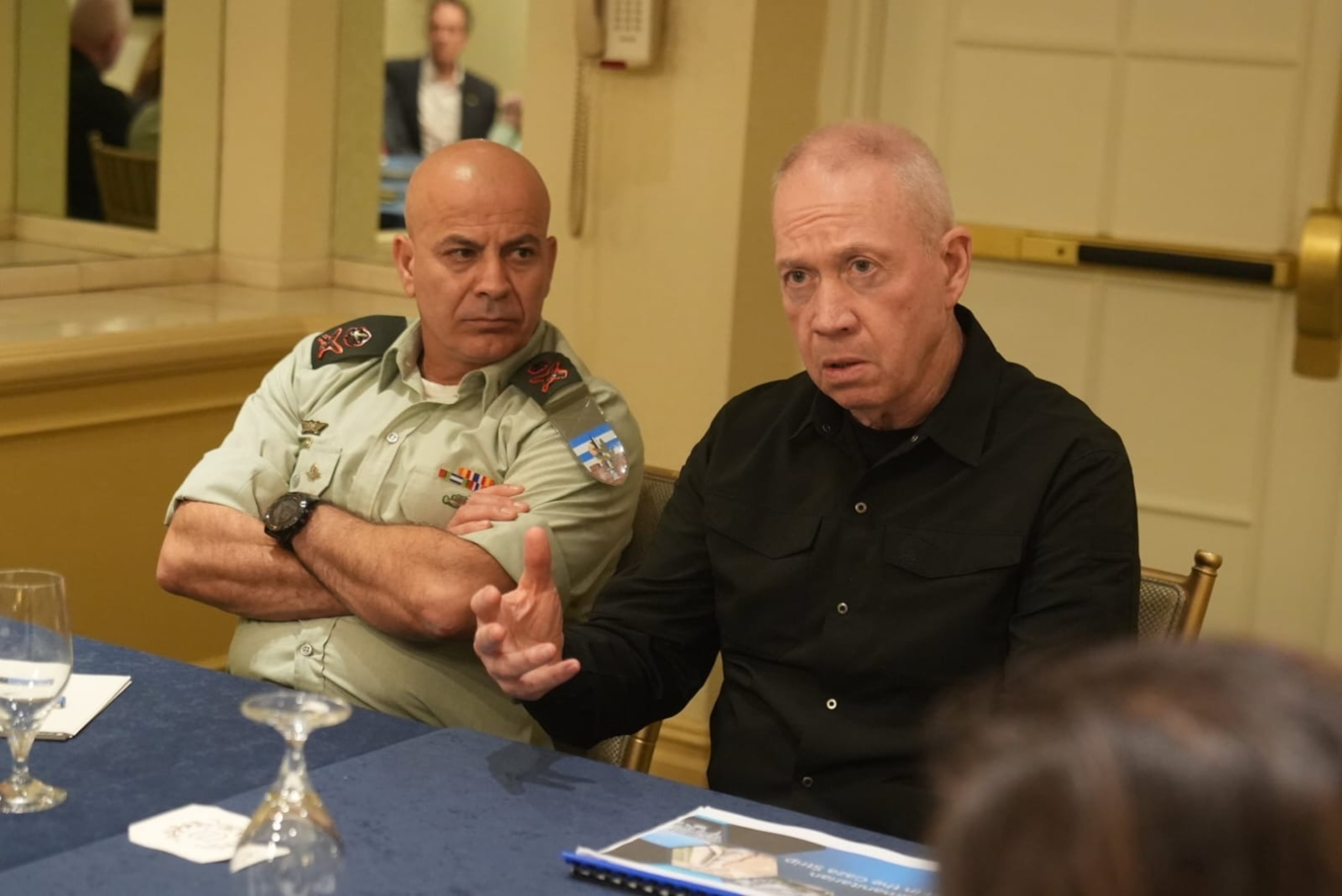
Israeli Defense Minister Yoav Gallant and Maj. Gen. Ghassan Alian met with UN officials in Washington this week to discuss security guarantees for aid workers in Gaza.
Israel MOD
“As I have emphasized since the beginning of the war — our war is with Hamas, not the civilian population of Gaza,” Gallant said in a statement. “My policy, as Minister of Defense, is that of full commitment to the humanitarian efforts, and of full cooperation with the international community to improve the situation in the Gaza strip and specifically the Mawasi [a town on the southern coast of Gaza] and the rest of the humanitarian zone.”
The disagreement between the U.N. and Israel has deeply complicated extensive efforts by the U.S. to bring humanitarian aid into Gaza — a priority for President Joe Biden as he faces sharp criticism from his party for giving broad support to Israel’s military operations in Gaza since the Oct. 7 Hamas attacks.
Biden ordered the U.S. military to build a pier this spring in the hopes that an established maritime corridor could help rush in humanitarian goods and supplement aid entering through ground crossings. The pier, though, has struggled to make a substantive impact on the worsening hunger crisis, as high seas have forced it to shut down several times in the six weeks it’s been operational.
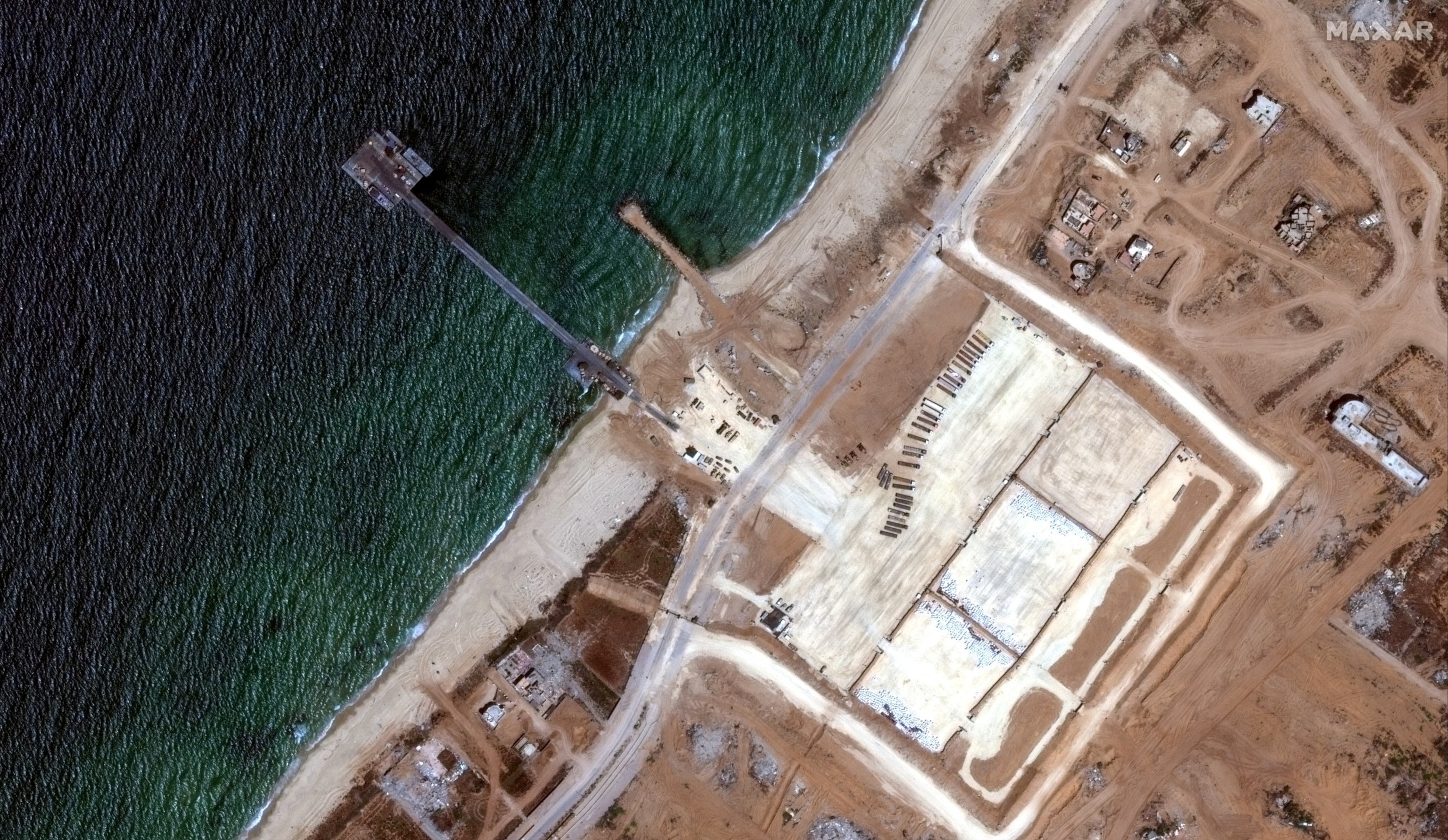
A satellite image shows U.S. military-run humanitarian aid pier in Gaza, June 12, 2024.
Maxar Technologies via Reuters
The Pentagon announced Friday the pier was being taken offline again Friday, as discussions were underway on whether to reinstall it at all.
A more pressing issue though than the pier’s operational capacity so far has been distribution. Much of the 19 million pounds of aid already delivered via the pier has been piling up after the U.N.’s World Food Programme — the sole organization tapped to distribute the aid — temporarily halted distribution after a June 8 hostage rescue operation by Israeli troops that came dangerously close to the pier.
One official said there’s a deal on the table for the WFP to clear the aid piling up at the beach as a one-time measure. Still, broader distribution of humanitarian aid across Gaza otherwise remains at a standstill until the two sides reach consensus.
In the June 17 letter obtained by ABC News, the U.N.’s Hadi said the aid organization needed specific items before it would feel comfortable resuming aid, including a “functioning mechanism for operational coordination with the IDF” that would enable “direct contact” between aid workers and IDF brigades.
The letter also called for aid workers to be allowed to bring in armored vehicles, spare parts, 100 sets of personal protective equipment and sophisticated communications equipment including satellite internet terminals and electronic SIM cards so workers could connect to a private 4G mobile network.
“Access to this equipment will be strictly limited to individuals who are actively employed by United National/International Organizations operating in Gaza. Stringent security measures will be put in place to protect the system from any potential inappropriate use and to ensure compliance with the approving authorities,” Hadi wrote to Israel’s Maj. Gen. Ghassan Alian, who attended the meetings in Washington this week with U.N officials to discuss the matter.
Several U.S. officials said they view the requests as reasonable and support Israel allowing those items inside Gaza.
The U.N. declined to comment on the specifics in the letter, which had not been publicly released.
Stéphane Dujarric, spokesperson for the Secretary-General of the United Nations, said security conditions in Gaza is part of an “ongoing discussion” with Israel.
“We’re just trying to have the basic tools to allow us to run an operation in a war zone,” he told ABC News.
ABC News’ Luis Martinez, Jordana Miller and Dana Savir contributed to this report.
A dispute over aid worker equipment has led to an accumulation of much-needed aid in Gaza, causing concern among humanitarian organizations and local residents. The issue stems from a disagreement between the Israeli government and aid organizations over the importation of certain equipment for aid workers in the region.
The Israeli government has imposed strict restrictions on the importation of certain items into Gaza, citing security concerns. Aid organizations argue that these restrictions are hindering their ability to effectively deliver aid to those in need. In particular, the dispute centers around the importation of communication equipment and vehicles for aid workers, which are essential for their work in the region.
As a result of this dispute, a significant amount of aid has been held up at border crossings, leading to an accumulation of supplies in warehouses and storage facilities. This has created a bottleneck in the delivery of aid to those who need it most, exacerbating an already dire humanitarian situation in Gaza.
Humanitarian organizations have called on the Israeli government to lift restrictions on the importation of aid worker equipment and to allow for the timely delivery of supplies to those in need. They argue that these restrictions are not only impeding their ability to provide vital assistance to vulnerable populations, but also undermining efforts to promote peace and stability in the region.
Local residents in Gaza have expressed frustration and concern over the accumulation of aid, fearing that delays in the delivery of supplies could have serious consequences for their well-being. Many rely on humanitarian assistance to meet their basic needs, and any disruption in aid delivery could have a devastating impact on their lives.
In response to the growing crisis, international organizations and diplomatic efforts are being mobilized to address the dispute and ensure the timely delivery of aid to Gaza. It is crucial that all parties involved work together to find a resolution to this issue and prioritize the needs of those who are most vulnerable in the region.
Ultimately, the dispute over aid worker equipment highlights the challenges and complexities of delivering humanitarian assistance in conflict-affected areas. It is imperative that all stakeholders prioritize the well-being of those in need and work towards finding sustainable solutions to ensure the effective delivery of aid in Gaza and other conflict-affected regions.
